DCC
There are many advantages to opting for DCC, from operational complexities, to the benefits of sound and lighting in locomotives. It is generally more expensive than conventional analogue control however, so it's useful for modellers to know the pros and cons. Here, are 10 facts about DCC control before you make your decision:


1. The power is always present in the track enabling independent control of locomotives, even on the same track and without the use of isolating sections.
2. The controller simply sends instructions via the base station’s command station to the locomotive decoder. This is why each locomotive decoder must have a unique address. This is usually a two digit address in entry level systems like those supplied with digital train sets or four digit addressing with more advanced systems.
3. Compatibility is an important issue. While every effort is made for the compatibility of systems with decoders, and the digital signal produced by the command station, inter compatibility of some controllers with some hardware can't be guaranteed. This means you can take your digital fitted locomotives and run them on a friend’s digital layout, regardless of the make or model of the system, but your controller will not necessarily plug into the other system unless it is of the same make. Look for the DCC compatibility logo or NMRA conformance symbol to be sure of compatibility with the decoders in your locomotives.
4. All decoders have the default address of 03 when new, including those fitted to locomotives at the factory. You must change the address to something unique from the rest of the collection.
5. DCC will not solve fundamental problems with a locomotive or layout. Locomotives must be in good condition for DCC to deliver its benefits. Wiring and track problems must be fixed under conventional analogue control before DCC will make the performance of the layout better.
10
THINGS YOU SHOULD KNOW ABOUT
6. Digital decoder fitted locomotives will run on DC (analogue) layouts. Check the instructions to ensure the correct decoder setting (Configuration Variable or CV) has been turned on to allow analogue operation. Most decoder functions will not be available on analogue control, particularly sound functions in sound decoders.
7. Always read and keep the instruction manuals. DCC is complex and multifaceted, increasing the play value and enjoyment of models. A thorough read of manuals will help you gain all of the benefits of DCC.
8. DCC will work with any scale and gauge, provided there is room to fit a decoder in the locomotives!



9. Decoders come in all shapes and sizes, with plugs, sockets and harness wires to suit different applications. From the very small to the large, high current jobs for O gauge and larger scales. There is a decoder for almost every application, including Z gauge models. It is important to know that they all do the same basic job and harness wire colours are a standard throughout. Always seek advice on suitable decoders until you become familiar with them.

10. The whole point of DCC is a greater level of realism in model railway control and fewer operating constraints. It’s as close to real driving as you will find in miniature!
STUDENTS COMPLETE MINIATURE RAILWAY
A 90 metre long 7.25in gauge railway is completed by students of the College of West Anglia attending Constructionarium. The College of West Anglia has highlighted the learning undertaken by its students attending Constructionarium and completing its 'Brunel Line' project. This project requires students to work in a team to plan, design and build a 90m long 7 1/2 inch gauge railway.
Constructionarium's facility is based across a 19-acre site in Norfolk, and is purpose-built for students and employees working in the building environment, helping turn theory into practice. Watch highlights from the project in the video: https://youtu.be/evPP0gHQiTs
SNAP POLL on the Twitter channel @BRMmagazine shows VALUE OF CLUBS AND SOCIETIES TO MODELLERS, today.



Let’s have our own local PEMRC Model Railway Photo of the Year Contest!
The only rule is that the submitted photograph must have been taken and edited by you. The subject of the image is model railway and we could have two categories: Images of your own layout/diorama. Someone else’s and/or public layout. Closing date is 31 January 2022. Submit your digital image as JPG image via email to: pemrailroadclub@gmail.com with PHOTO COMPETITION in the header. You can submit up to 2 images in each category. We could possibly produce our own club calendar with the submitted images.
RhB breaks Guinness World Record with 1,906m long train
rail operator Rhaetian Railway has made it into the record books after operating a 1,906m long train made up of 25 four part Stadler Capricorn railcars.
On October 29, 2022 Rhaetian Railway (RhB) took the longest narrow gauge passenger train in the world on the UNESCO World Heritage route from the Albula Tunnel in Preda to the Landwasser Viaduct just outside Filisur. The record breaking event was attended by 3,000 guests and railway enthusiasts.



“After intensive preparation, we are overjoyed to have achieved this world record. Not only did we have a wonderful railway festival here in Bergün, but we were able to present ourselves around the world as a fascinating and innovative mountain railway thanks to our dedicated partners, sponsors and an incredibly dedicated team,” Renato Fasciati, director of RhB.
The success of the world record was confirmed on site by Guinness World Records. The Bergün railway festival also witnessed another record with a 1:22.5 scale model made up of 25 Capricorn LGB model trains measuring 80m in length.
Swiss
Source: RhB ©swiss image.ch/Mayk Wendt
Facts and figures about the world record attempt
The world record route from Preda to Alvaneu is 24.93km.
The train covered a difference in altitude of 789.4 metres. The world record breaking journey crossed 48 bridges and went through 22 tunnels.
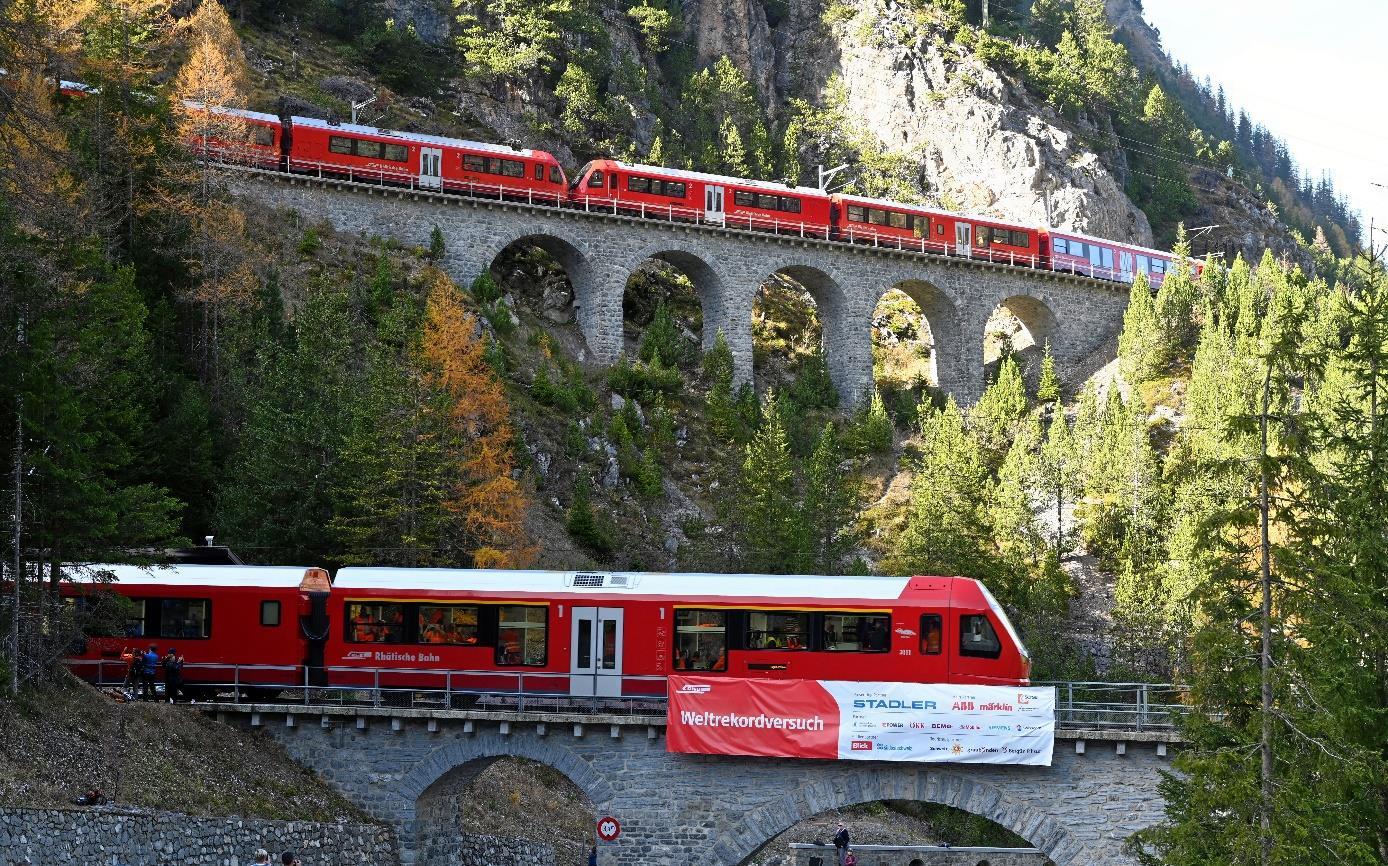
The largest viaduct on the world record route is the world famous Landwasser Viaduct just after Filisur with a length of 142 metres and a height of 65m. The longest tunnel on the world record route is the Greifenstein Tunnel, which is 698m long.


The attempt to break the world record generated 4,000kWh of braking energy (recuperation). The world record train travelled at a speed of 30 to 35km/h. The record breaking journey took around an hour.
The weight of the record breaking train was around 2,990 tonnes.
Seven train drivers and 21 technicians were at work on the train to ensure its operability.
Watch both videos with all the details in English here on Märklin TV

And here with more aerial views from above
On Saturday 29th October at 10:30am BST/UTC+1, one of the UK's longest serving and largest manufacturers of model railway’s, PECO, hosted a world first of emulating, in miniature scale, a world record that is being attempted simultaneously by Swiss railways, to mark 175 years in operation. The world record attempt by the Swiss Rhätische Bahn will be staged to create the longest passenger train in history of 100 carriages and over one mile long, along the Albula/Bernina UNESCO World Heritage route in the Swiss Alps.



The British owners of the miniature railway equivalent to this, ‘The Andeer Line’, which is modelled on a section of this route, came up with the idea of emulating this but in model form, and using PECO’s very own British made HOm scale Streamline track. The team achieved this feat in conjunction with Swiss railways and streamed this live on their primary streaming channel, PECO TV, as well as offering tickets for enthusiasts to witness the event and later to drive the Swiss model trains using DCC controlled smart phones and tablets. View the video of their achievement here, but fast forward to start at about 5 minutes https://youtu.be/3D_CRrYBiZ8 PECO (Pritchard Patent Product Co Ltd) is a British manufacturer and promoter of model railway track and accessories, which has been in operation for over 75 years, and exporting to over 30 countries worldwide. Based in Devon, PECO employs over 150 staff and designs and manufacturers all of its products at its headquarters in Beer. https://peco uk.com/

WORLD TRAIN RECORDS
The longest high speed train in the world!
High speed passenger train Siemens Velaro RUS "Sapsan" runs from Saint Petersburg to Moscow near Bologoe town. "Sapsan" (translate as "Peregrine Falcon" from Russian language) started regular service on the Moscow Saint Petersburg Railway in December 2009 at maximum speed of 250 km/h (160 mph). In near future new build High Speed Lines would allow for speeds of up to 330 km/h (205 mph). On this photo you can see dual formation "Sapsan" train, which has set a new Guinness World Record for the longest high speed train in the world. Built by Siemens, 20 car Russian gauge train, which already holds the record of being the fastest train on Russia’s national rail network, measured 500 metres and 78 centimetres. (1/3 mile) In August, Russian Railways (RZD) began operating the dual formation Sapsan train to increase capacity on the Moscow St Petersburg
Longest high speed railway line

The longest high speed line is the 2,298 km Beijing Guangzhou line (1,427.91 miles), with trains travelling at 300 km/h (187 mph) between 35 cities in less than ten hours. It was officially opened on 26 December 2012.
Longest freight train record
The longest train ever was 7.35 km (4.57 miles or 24,123 ft. 11.61 in) long, and consisted of 682 ore cars pushed by 8 powerful diesel electric locomotives. Assembled by BHP Iron Ore, the train travelled 275 km (171 miles) from the company's Newman and Yandi mines to Port Hedland, Western Australia, on 21 June 2001. https://www.guinnessworldrecords.com/world records/62961 longest freight train
© Ilya Semenoff near Uglovka station, 7 July 2016
Longest rideable miniature hobby railway

Train Mountain Railroad Museum near Chiloquin, Oregon, USA, has a total of 35.5 miles of 7½ inch gauge track, with 20.5 miles of 'mainline' track, and the remainder comprising yards and sidings. https://trainmtn.org/tmrr/index.shtml
Longest Model Train record

The longest model train measured 282.11 m (925 ft. 6 in) and was made up of 31 locomotives and 1,563 carriages. It was constructed by the Wilmington Railroad Museum Model Railroad Committee (USA) and was presented and measured in Wilmington, North Carolina, USA, on 23 April 2011. The scale of the train was 1:87.1 (H0). The scale length of the train is 24.57 km (15.27 miles). A train consisting of 31 locomotives and 1563 cars was placed on 1000 feet of track in the Convention Centre’s main exhibit hall. At about 925.55 feet long, this train travelled continuously for 750 feet to surpass the record set by Miniatur Wunderland in Hamburg, Germany in 2008. The World Record Run was witnessed and documented in order to be included among other achievements listed by Guinness World Records. https://youtu.be/ aQAOV6m7Yk
Largest Collection of Model Trains
The largest collection of model trains is 2,956, achieved by Bernd Schumacher (USA), in San Luis Obispo, California, USA, on 17 September 2016. Bernd started collecting z scale model railroad trains in 1992 to celebrate his 10 year anniversary of immigrating to the United States.
JOOLS HOLLAND and his RAILWAY EMPIRE

 London landmarks such as the Post Office Tower and Greenwich Royal Observatory stand out in this impressive scene. Many of the structures in this scene were scratch built by the late Doug Hudson.
London landmarks such as the Post Office Tower and Greenwich Royal Observatory stand out in this impressive scene. Many of the structures in this scene were scratch built by the late Doug Hudson.
Like many of you, my interest in model railways started as a young boy. In the Swinging Sixties, my father built me a small layout in our tiny, terraced house in not particularly swinging Greenwich on the River Thames in old Southeast London. Over the years I maintained an interest, and as my circumstances improved, I kept some sort of layout set up in a shed or basement of wherever we were living. Many of the buildings in this scene, such as the BOAC building and Charing Cross Station, are the work of Doug Hudson and John Howe, friends of Holland. The big turning point, however, came in the early 2000s following a chance encounter with the top layout builder, modelling guru, and noted vocalist Sir Rod Stewart. I told him about my 5 x12 foot setup and how I was considering starting again in a larger room. He listened and gave me some very good pieces of advice. Firstly, he told me a layout must be placed in the largest room available. This, he assured me, was because even with the biggest layouts, the modeller still has to make compromises and compress certain scenes.

Secondly, and most importantly, he said the act of creating a large model brings enormous happiness and a sense of wellbeing to the builder. Jools packs a lot of Europe into this trackplan.

Lastly, he told me to subscribe to Model Railroader magazine, explaining that generally American homes were larger than in Britain. Because of this, America leads the world in large sized home based layouts. This was all very good advice.
An overview shot of Holland’s layout shows just how long it is. An encounter with Rod Stewart grew the passion to build such a large layout.
Thankfully my family were very understanding, and looking back, they seemed quietly delighted that I was going to be out of the way. I was enjoying myself in a new room, approximately 14 x 50 feet, which was nearing completion above an extension to our house. As a working musician, I have spent my life touring. Early on I was on the road with Squeeze in the USA, and more recently I have toured around the British Isles, mainland Europe and the world with my big band. When the opportunity arises, I liked to explore the local model shops. This meant that I had accumulated boxes of buildings, accessories, etc. I worked on the well known hoarder’s rule: buy it when you see it, not when you need it.
Whenever possible, I like to travel by train. One of the train journeys I always enjoy is going from London to Paris, Amsterdam, or Brussels on the Eurostar. This modern day express travels though highly contrasting landscapes, cities, and towns over a relatively short distance of a few hundred miles. So, my idea was to somehow fit an impression of this into the new room.


 This scene shows how Jools mixed card kit buildings and scratch built buildings on his layout, can you tell the difference?
This scene shows how Jools mixed card kit buildings and scratch built buildings on his layout, can you tell the difference?
Wren church and Christ Church Spitalfields dominate the skyline in this section of the layout. A GWR Prairie steam engine is switching cars at Lovell’s Wharf in one of many water focused scenes on the layout.


The room was a good length and width, able to accommodate almost 100 feet of layout in a long narrow u shape. The internal pitch of the roof starts at five and half feet from the ground. The bench work at its lowest level is 35”, slightly lower than ideal, but this allows for tall buildings and hills to sit against a flat wall. The bench work started at 4 feet wide, but in many areas my track plan evolved, and the baseboard got extended out by a further 9” to a foot.
I got some friendly set painters to create the sky and had some help with laying my preliminary track design. One long loop around the whole room comprised the Eurostar. Five further smaller loops run around London and its suburbs. Separated by water is continental Europe, including its docks, countryside and towns. This was later expanded with a working tram, an operational underground loop, a working arterial road, and a motor racing circuit. Above the bench work a facia board valence concealing powerful strip lights was fitted.
Now I was ready for the creation of cities, towns, hamlets, farms, valleys, mountains, and rivers. Docks and industries would be served by the operational transport links of sea, road, and rail. For me the most enjoyable part of the creative process has been laying out boulevards and town squares with attractive buildings, then picking them up and starting again to hone down a particular scene. I wonder if many modellers, like me, are frustrated town planners. The generous size of my layout has allowed me to have the room divided into different sections separated by scenic breaks such as hills, rivers, and valleys. I have about 25 feet of mainland Europe. At the far end is Cold War period Berlin with check point Charlie, the British embassy, KGB, and CIA headquarters. A Berlin Wall reflects in a strategically placed mirror (see “Mirror, mirror on the layout, September 2005). A university and art museum appear on the layout, the latter featuring small and changing contemporary art shows. A theatre, concert hall, and nightclub called “Vertigo” are included to provide the inhabitants with an evening’s entertainment.
Jools spent much time detailing the stations around his layout, going so far as to include rail line maps on the pillars in this London Underground station.

The main square has a fine replica of a triumphal column, which in reality sits outside the hermitage museum in St. Petersburg Russia. I bought mine in the gift shop when I was fortunate enough to visit. Surrounding the base of the column is a market scene set up by my youngest but now grown up daughter Mabel. A station next to the main market square on the upper level welcomes international trains.
On the lower level, Mittlestadt station services the commuter trains and goods wagons on the Berlin inner and outer ring. From here we travel past the first scenic break which is the hilltop medieval town of Rothenburg ob der Tauber, the inspiration for Ian Fleming’s “Chitty Chitty Bang Bang.” Then we go on through a picturesque Flemish landscape past Rubens’s house and into the Port of Ghentwerp. Here, the architecture is Dutch and Flemish typified by step and bell shaped gables. As one might expect in a port, we have docks, bars, a red light district, hotels, and Django Reinhardt’s caravan. The next scenic break is between mainland Europe and Great Britain, or to be more specific, my stylised Ghentwerp Port and the riverfront of my 1950s Greenwich. An ocean or sea really does present great challenges of compression to the modeller, so I decided not to bother and was content for the strip of water to represent London’s Thames on one side and Scheldt, the great working Flemish River, on the other.
On this layout, the River Thames doubles as the English Channel. Instead of the tunnel, trains pass this body of water by bridge. Here, the Golden Arrow crosses with Bulleid Pacific No. 34100 leading. Some of the buildings seen in Greenwich and old London are particularly fine examples of work by the late Doug Hudson and a few kits bashed by myself. The river police station was copied from a print by artist Rex Whistler.

John Howe built the operational London tram for me.

The last trams in London ran in 1952, therefore, in this section the scenes date from that period. It includes fine models of important 17th and 18th century London churches before they were repaired after being damaged in the Blitz. Various London pubs, working men’s cafes, shops, houses, bomb sites, and a workhouse add to the post war atmosphere. One the great pleasures for me has been creating cityscapes, especially re creating lost and demolished buildings both large and small.
Jools has installed interior lighting throughout his layout, which is shown in a brilliant display during twilight hours.
I have a model of my grandmother’s fruit and vegetable shop, which was bulldozed to make way for a new road and the wonderful Euston railway arch. The latter was built in the mid 19th century and was the magnificent portal to the northwest and Scotland from London. It was demolished despite huge protests in the early ’60s. It’s a fine model built to a slightly smaller scale of 3mm per foot instead of 4mm. This scale was also applied to the city churches, as I feared otherwise they might dwarf their neighbours.

The grander neighbourhoods of central London are represented with garden squares and associated mews houses, as well as the American Embassy. These charming, cobbled mews homes were originally built for the servants and horses. They were later used by the upmarket motor trade and as homes for pop stars, artists, and spies. Many of us fondly remember them as the settings of groovy 1960s TV shows, where they were inhabited by Danger Man, the Avengers, and men in suitcases.
As in full size cities, the centres tend to be the earliest part. As we venture farther into the suburbs, everything becomes more modern. This has allowed me to put in 1930s buildings, including a copy of the art deco Arnos Grove underground station and a working overground suburban loop. Above this sits my St. Pancras International Station. From here, the Eurostar can embark on its journey around the long loop to Ghentwerp and Berlin. Beyond this there are modern blocks of flats and Walthamstow Greyhound racing stadium. The end of this scene is my industrial area home of Slag Effluents (industry) Works.
 The former Midland Railway terminus at St. Pancras is one of the many stations that Jools modelled after their real life counterparts. This one even includes its gothic style hotel.
The former Midland Railway terminus at St. Pancras is one of the many stations that Jools modelled after their real life counterparts. This one even includes its gothic style hotel.
John


The last and most recently finished section gives us a break from the crowded mess and smells from the city. A lush valley spanned by viaduct and other bridges leads up to a hilltop castle. Finally, at a height of 50 feet is an operational motor racing circuit. It is an OO scale 1960s slot car system, Minic motorways. The cars can be competitively raced; this seems to give enormous pleasure to many of our visitors. Below this is a fiddle yard from where the rolling stock can be fed into different parts of the layout. In the last year, I have converted to DCC, which has improved operations enormously.
Dream trains
No shipping costs for combined orders of R2000 or more. Shop online and fill your cart, even if less than R2000, then contact PEMRC Mike van Zyl, to combine your order with fellow club members and all will save.
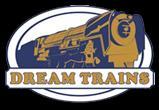 Howe scratchbuilt this model of the Cavendish Arcade as another landmark for Jools’s layout.
Howe scratchbuilt this model of the Cavendish Arcade as another landmark for Jools’s layout.
Two modern Eurostar trainsets idle at a platform in front of flats, typical of the 1960s era, and the Walthamstow Grayhound Stadium.

In conclusion, I must thank my friends, family, and professionals who have helped me to achieve my object. The wonderful thing about the big layout is that there is always some corner to redevelop or improve. Thirty years ago a kindly, old, white bearded gentleman who ran a now long closed model shop in Southeast London advised me not to try to hurry through things but to enjoy the creative process. He said, “It’s your modelling time which will give you the greatest pleasure.” I would agree. Layout at a Glance
Name: Mr Holland’s Layout
Size: 12 x 50 feet
Scale: OO in London, HO in Europe
Prototype: London St Pancras/Euston via Ghentwerp to Berlin
Era: 1950 to 1999
Style: Post war London/Europe
Mainline Run: Trans Continental Loop 110 feet
Minimum Radius: 33”
Maximum Grade: None
Bench work: MDF at a maximum width of 55 inches and a minimum of 48 inches
Height: Underground: 28 inches, local loops: 35 inches, transcontinental loop: 39.5 inches
Roadbed: Directly onto baseboard
Backdrop: Painted sky
Track: Peco/Hornby
Control: Z21 Digital Command Control
Jools peers over the railway empire that he has built, showcasing his childhood, his friends, and the places he’s been. Jools Holland built his railway empire to showcase his childhood in London


Jools Holland is a musician and broadcaster and a founding member of the rock band Squeeze. For the last 25 years he has toured and recorded with his big band and has a long running music TV show on the BBC. He has four grown children and a new grandson who he is hoping to introduce to the pleasures of railway modelling.

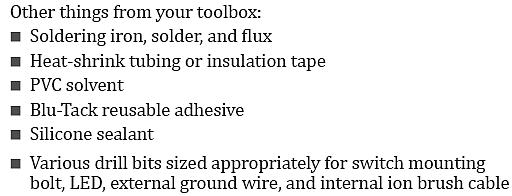





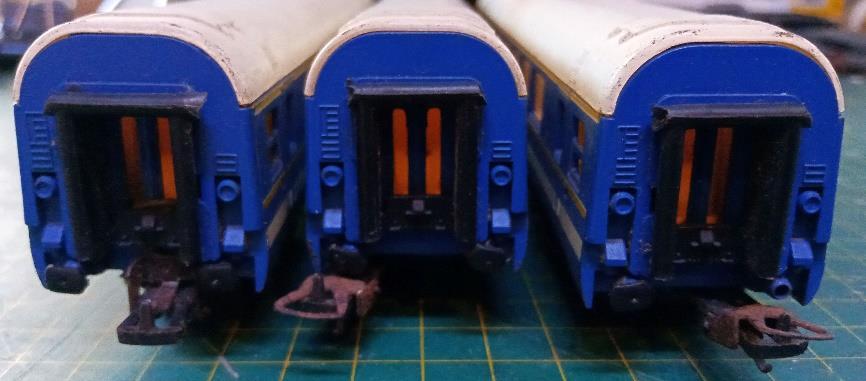

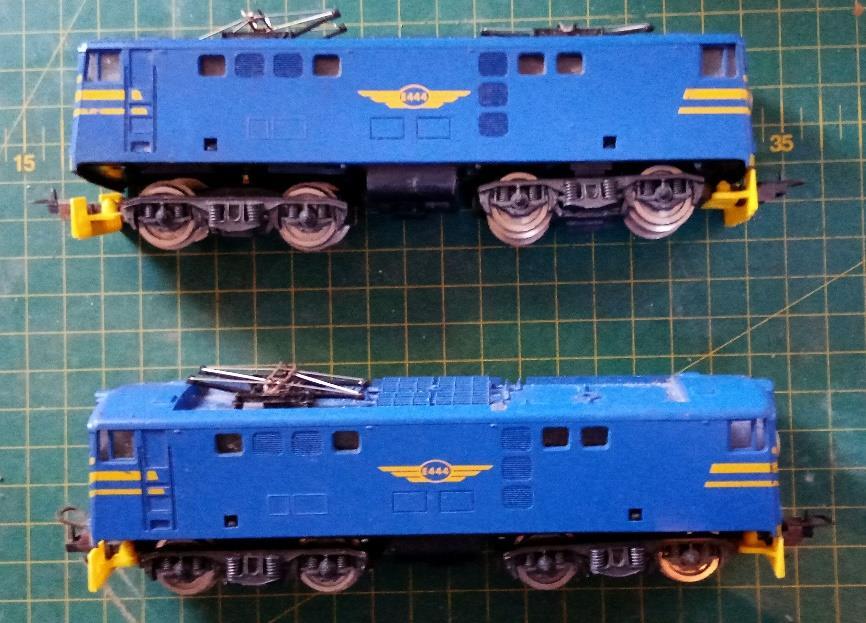
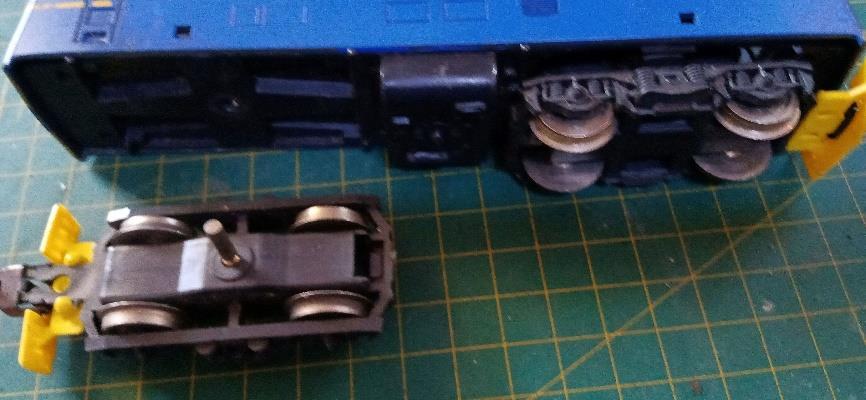

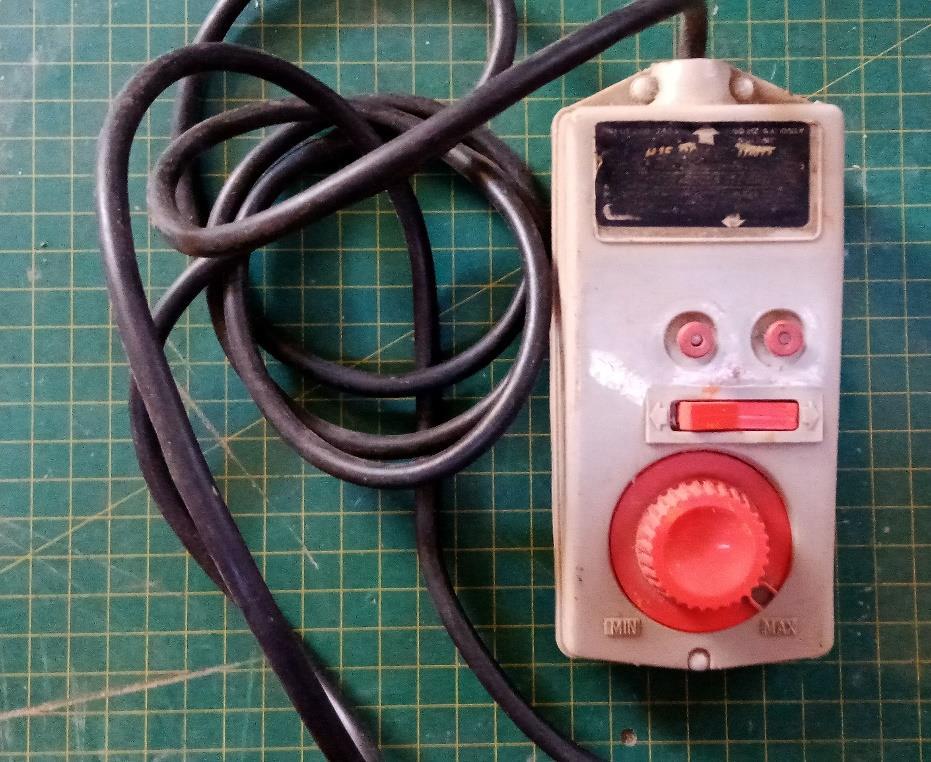



Please contact Roel at 082 739 7679 with your offer: MARKET PLACE





Clack, has sinnce brought her collection to Roel to sell; please arrange a suitable time to view There is still more than what is illustrated here, e.g. controller, station building and loco shed etc. Other items here: Contact Roel on 082 739 7679
Verna






Contact Roel on 082 739 7679


SNIPPETS
10 Nov 1964 BR Class 4 # 43072 crashes at
Bringing you the most complete listing of UK Model Shops, Clubs and Manufacturers since 1999, including a searchable Model Rail magazine article database covering all issues since 1997. Developed by Modellers • Supported by Modellers • For Modellers
Bradford
In 1952 Princess Elizabeth was in Kenya with her husband Prince Philip, when the news came through she had become Queen on the death of her father King George VI.
Two years later she was back in East Africa visiting Uganda, including a trip by rail hauled by two newly built East African Railways “Governor” (later EAR 60) Class 4 8 2+2 8 4 Garratts.


© The Railway Magazine 10 2022


Moving a retired SAR 15F back to where it was built Britain’s leading heavy haulier Andrew Goodman embarks on an epic one hundred day journey on the road, rail and ocean to move a vintage 15F steam locomotive 7,000 miles from Bloemfontein in South Africa back to Glasgow, Scotland where it was originally built sixty years ago. Each challenge they encounter is clearly illustrated with animated graphics. When it finally gets under way there is a brilliant chorus with a dedicated song; please note the lyrics. https://www.youtube.com/watch?v=ae8rOmh3RpU
Thanks Hylary for the tip. R

Mini World Models Shop online and use this special coupon to claim

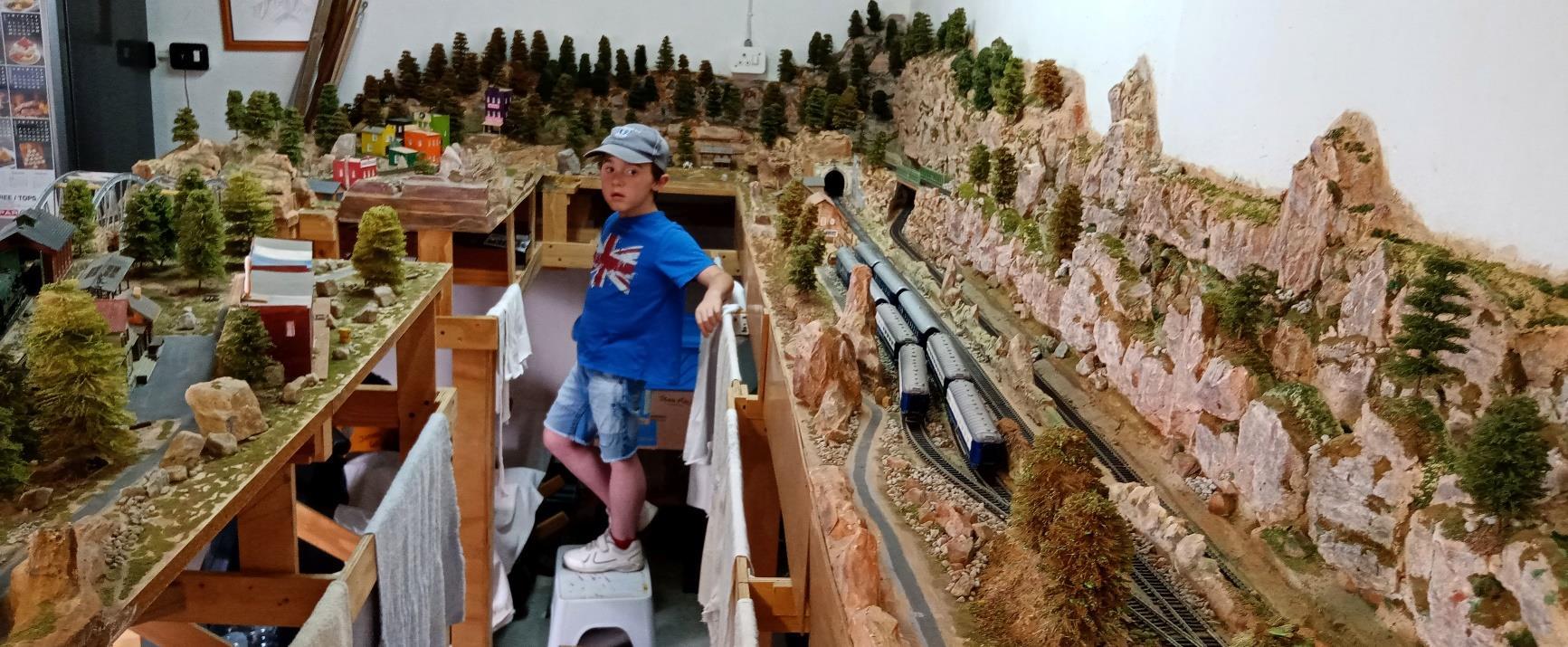


LAYOUT VISIT GRAHAM CHAPMAN
Thank you Graham & Helen for hosting us. A special thank you to junior train engineer James Chapman


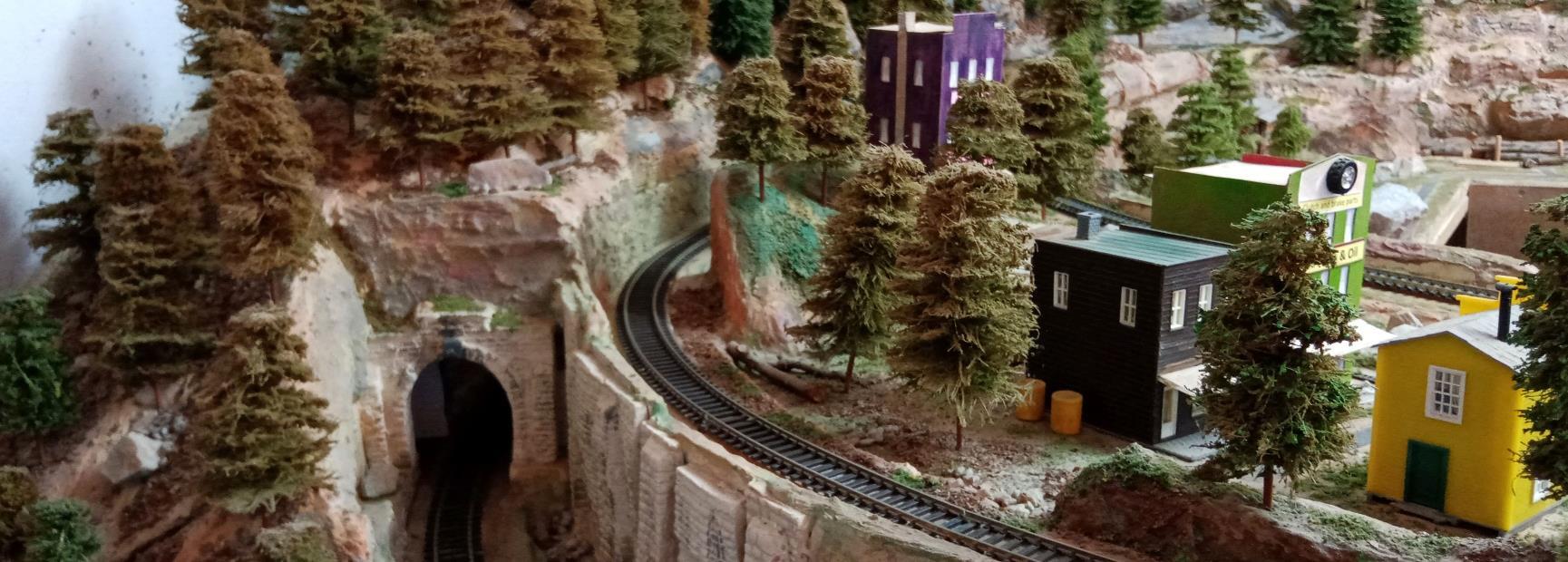
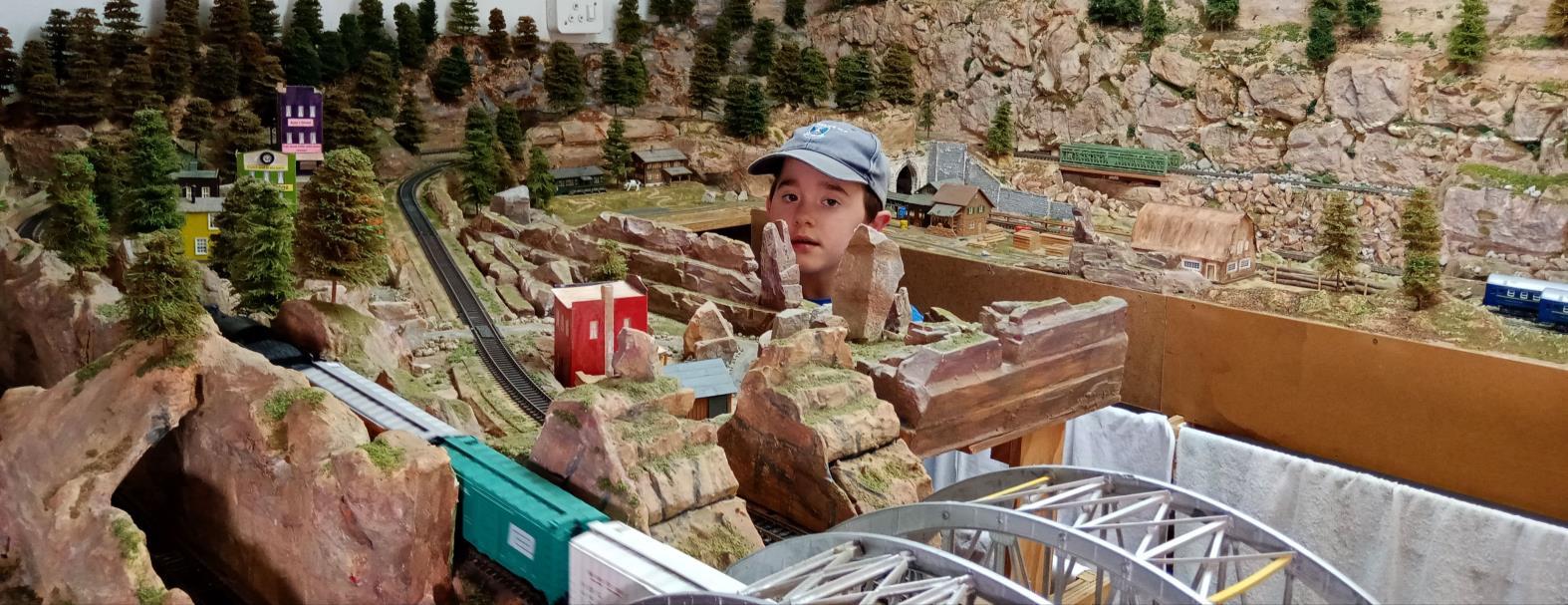





Similar to last year, the series attracted more than 1.2 million viewers. Were you one of them? Via the provided internet link, everyone around the world could watch. Season 2 saw individuals registering to take part and only one team. It was thus up to the organisers and media company Concept Street, to put the teams together.
In each episode, the jury sets a specific theme and the teams have to include compulsory elements to stimulate their creativity. The layout of 3 x 1.5 metre in HO scale needs to be built in 3 days.




Which requirements must the model railway meet?
Evan: For me a model railway is successful if there is a well developed story In addition, the entire surface must be completely and properly finished. Of course, the train and its route must play the biggest role, so it must work well and fascinate.
Joyce: The model railway must appeal and inspire. A good model railroad pulls you into the created world. You want to feel like you're being sucked into the scenery and story. Terms such as fascinate, intrigue, attract, emotive and surprise can all be applied to a good model railway for me.
The adjudication became more difficult after each episode as the teams were getting better and better and were therefore more evenly matched
The Jury members Joyce van Diepen and Evan Daes with TV presenter André van Duin (centre). The themes were:
And the winning team in each episode is…….

DE GROTE KLEINE TREINEN
COMPETITIE
1. Famous
journeys 2. Famous
3. The
4.
5.
6.
train
fairy tales
Netherlands
There's work to be done
On vacation in Europe
The four seasons
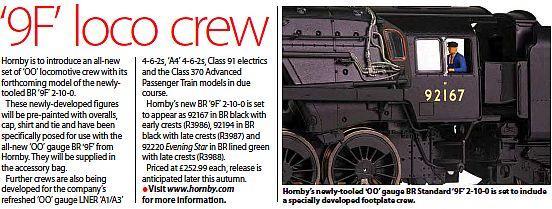
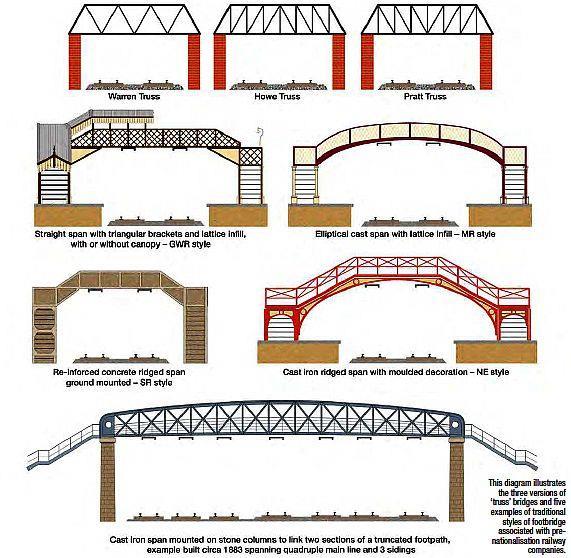

PROTOTYPE INSPIRATION: FOOTBRIDGES

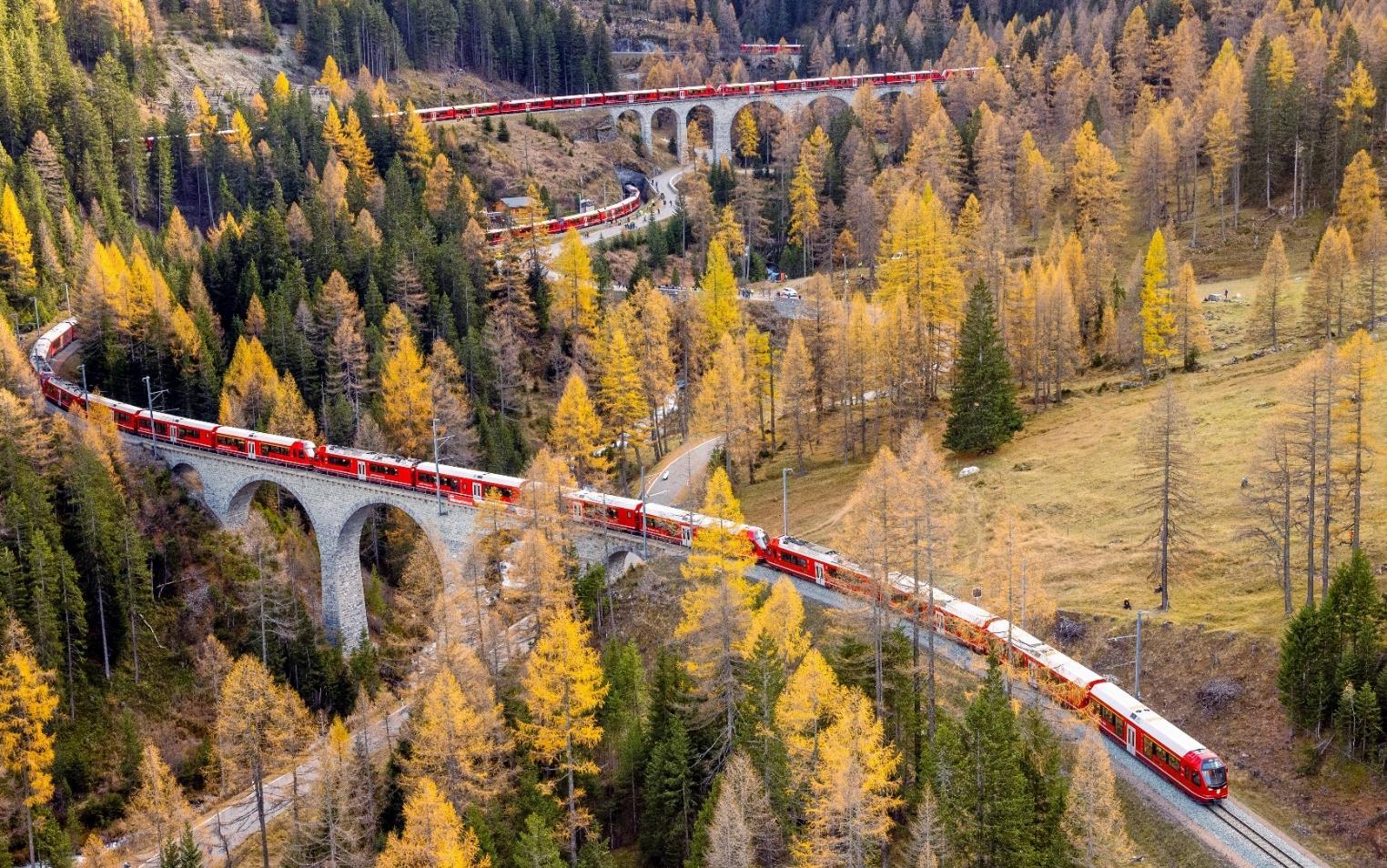


































 London landmarks such as the Post Office Tower and Greenwich Royal Observatory stand out in this impressive scene. Many of the structures in this scene were scratch built by the late Doug Hudson.
London landmarks such as the Post Office Tower and Greenwich Royal Observatory stand out in this impressive scene. Many of the structures in this scene were scratch built by the late Doug Hudson.




 This scene shows how Jools mixed card kit buildings and scratch built buildings on his layout, can you tell the difference?
This scene shows how Jools mixed card kit buildings and scratch built buildings on his layout, can you tell the difference?






 The former Midland Railway terminus at St. Pancras is one of the many stations that Jools modelled after their real life counterparts. This one even includes its gothic style hotel.
The former Midland Railway terminus at St. Pancras is one of the many stations that Jools modelled after their real life counterparts. This one even includes its gothic style hotel.


 Howe scratchbuilt this model of the Cavendish Arcade as another landmark for Jools’s layout.
Howe scratchbuilt this model of the Cavendish Arcade as another landmark for Jools’s layout.

























































 Scots Guardsman passing under Garforth footbridge © Yorkie Jonathan
Scots Guardsman passing under Garforth footbridge © Yorkie Jonathan